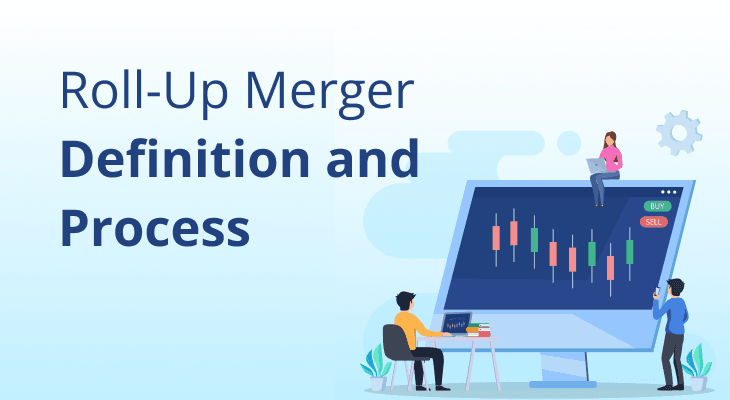
Return on Assets: How to Calculate and Interpret It?
Return on Assets (ROA) is an essential profitability ratio used to assess how efficiently a company utilises its assets to generate earnings. It provides insights into a company's financial health, helping investors and analysts compare performance across industries. This guide explains ROA meaning, its formula, and how to interpret it effectively.
What is Return on Assets (ROA)?
Return on Assets (ROA) is a financial metric that indicates how well a company generates profit relative to its total assets. It helps investors assess the effectiveness of asset utilisation and provides a clear picture of a company’s profitability. A higher ROA suggests better asset efficiency, while a lower ROA may indicate poor utilisation of resources.
Let’s say a company reports a net income of ₹ 50 crore and has total assets worth ₹ 500 crore. Then, its ROA would be 10%. This means the company earns 10% (10 paise) profit for every rupee invested in assets.
For an investor, a consistently high ROA across multiple years suggests that the company has strong operational efficiency, while a declining ROA may indicate potential inefficiencies or poor financial management.
Why is ROA Important?
ROA is an important financial metric for several reasons:
- Investment Analysis: Investors use ROA to compare companies in the same sector to identify efficient businesses. A company with a consistently high ROA is generally more attractive for long-term investments.
- Management Efficiency: A high ROA indicates that management is effectively using assets to generate profit. Businesses with an optimised ROA tend to have better financial discipline and capital allocation.
- Industry Comparison: ROA helps in benchmarking against industry standards, highlighting companies with superior performance. Asset-heavy industries such as real estate or manufacturing tend to have lower ROA compared to service-based industries like technology or consulting.
- Financial Decision-Making: Businesses use ROA to assess whether they need to optimise asset utilisation or restructure investments. ROA can help management determine if it’s necessary to divest underperforming assets or acquire new ones to boost profitability.
Formula for Calculating ROA
The standard Return on Assets formula is:
ROA = (Net Income / Total Assets) x 100
Where:
- Net Income = Total revenue less all expenses, including operating costs, interest, and taxes. It represents the company's profit after all expenditures have been deducted. This is also referred to as profit after tax or net profit after tax
- Total Assets = The sum of all company-owned assets, including cash, inventory, property, equipment, and intangible assets such as goodwill or patents. These assets represent the company's resources used to generate revenue.
Using the Return on Assets formula, you can now understand the earlier mentioned example where a company reports a net income of ₹ 50 crore and has total assets worth ₹ 500 crore. Hence, its ROA would be 10%.
Interpreting ROA: What the Numbers Mean
Understanding ROA values is essential for meaningful financial analysis:
- High ROA: Indicates strong asset efficiency, meaning the company generates high returns with fewer assets. This is desirable for investors as it suggests better profitability and operational effectiveness.
- Low ROA: Suggests inefficiency in asset usage or higher operational costs. A declining ROA over time may signal issues in business strategy or rising expenses.
- Negative ROA: Indicates losses, often seen in early-stage companies, businesses undergoing restructuring, or those struggling financially.
Here, it is important to consider industry-specific aspects as well. For example, asset-heavy industries such as manufacturing, real estate, etc., typically have lower ROAs due to capital-intensive operations. On the other hand, asset-light businesses like software, consulting, IT services, etc., often show higher ROAs as they require fewer fixed assets.
Factors That Influence ROA
Several factors impact a company’s Return on Assets:
- Asset Composition: A company with high fixed assets may have a lower ROA than a service-based business, which operates with minimal physical assets.
- Operational Efficiency: Companies that streamline production processes, manage costs effectively, and improve productivity tend to have a higher ROA.
- Revenue Growth: A company experiencing rapid revenue growth without proportionally increasing its asset base will likely see an improved ROA.
- Debt Levels: Companies that rely heavily on debt may experience fluctuating ROA due to interest expenses, which affect net income.
- Industry Trends: Sectors with strong demand cycles and competitive advantages often have more stable and higher ROA.
- Economic Conditions: Inflation, interest rates, and overall economic health influence asset returns and profitability.
Limitations of ROA as a Financial Metric
While ROA is a valuable tool, it has some limitations:
- Ignores Debt Structure: ROA does not account for how assets are financed (equity vs. debt). A company with significant debt may appear to have a strong ROA, but high interest payments could weaken its financial stability.
- Industry Variations: Comparing ROA across different industries may not be meaningful due to varying asset structures. Investors should always compare companies within the same industry.
- One-Time Events: Unusual gains or losses (such as asset sales or write-offs) can distort ROA, making short-term analysis unreliable.
- Not Always Indicative of Future Performance: A high ROA today doesn’t guarantee continued efficiency in the future. Investors should consider other financial ratios alongside ROA.
Conclusion
Return on Assets (ROA) is a vital financial metric that helps investors and businesses assess efficiency and profitability. By understanding ROA calculation, interpretation, and influencing factors, you can make more informed investment and financial decisions. However, it should be used in conjunction with other financial ratios — such as Debt-to-Equity ratio and Return on Equity (ROE) — for a comprehensive analysis of a company’s performance. As an investor, you should also factor in industry-specific trends and economic conditions when evaluating ROA to ensure a holistic view of financial health.
FAQ
What is Return on Assets (ROA)?
ROA is a financial ratio that measures how efficiently a company generates profit from its total assets. It helps investors evaluate a company's profitability and asset utilisation. A higher ROA indicates better efficiency, while a lower ROA suggests potential inefficiencies or high operational costs.
How is ROA calculated?
ROA is calculated using the formula:
ROA = (Net Income / Total Assets) x 100
For example, if a company’s net income is ₹ 50 crore and its total assets are ₹ 500 crore, its ROA would be 10%, meaning it earns ₹ 10 for every ₹ 100 in assets.
Why is ROA important for investors?
ROA helps investors compare the efficiency of companies in utilising their assets to generate profits. A consistently high ROA indicates strong financial performance and operational effectiveness, making a company a more attractive investment compared to competitors with lower ROA.
What is considered a good ROA?
A good ROA depends on the industry. Asset-light sectors like technology often have higher ROAs (15%-30%), while asset-heavy industries like manufacturing or real estate have lower ROAs (5-10%). Comparing ROA within the same industry provides a more accurate performance measure.
What factors influence ROA?
Several factors affect ROA, including asset composition, revenue growth, operational efficiency, debt levels, industry trends, and economic conditions. Companies with streamlined operations and effective cost management usually report a higher ROA.
How does ROA differ from Return on Equity (ROE)?
ROA measures a company’s efficiency in using its total assets, while ROE evaluates how well a company generates returns for shareholders based on its equity. ROE considers leverage, whereas ROA does not, making them complementary metrics for financial analysis.
Can ROA be negative?
Yes, a negative ROA indicates that a company is losing money relative to its assets. This is common in startups, companies in financial distress, or businesses undergoing restructuring. Persistent negative ROA may signal poor financial management or declining business viability.
What are the limitations of ROA?
ROA does not consider how assets are financed (debt vs. equity), making it less useful for companies with high leverage. It also varies significantly across industries and can be distorted by one-time gains or losses, requiring investors to use it alongside other financial ratios.
How does debt impact ROA?
High debt levels can reduce net income due to interest expenses, lowering ROA. However, if a company effectively uses borrowed funds to increase profitability, ROA can remain stable or even improve. Investors should also analyse the Debt-to-Equity ratio alongside ROA.
How can investors use ROA for stock selection?
Investors can compare ROA across companies within the same industry to identify efficient businesses. A consistently high ROA suggests strong asset management, making the company a good investment candidate. ROA should be used with other metrics like ROE, P/E ratio, and debt ratios for comprehensive analysis.


